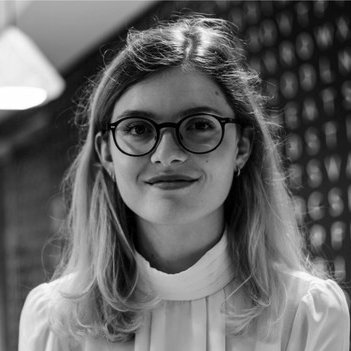S&P Global Offerings
Featured Topics
Featured Products
Events
S&P Global Offerings
Featured Topics
Featured Products
Events
S&P Global Offerings
Featured Topics
Featured Products
Events
Banking & Capital Markets
Economy & Finance
Energy Transition & Sustainability
Technology & Innovation
Podcasts & Newsletters
Banking & Capital Markets
Economy & Finance
Energy Transition & Sustainability
Technology & Innovation
Podcasts & Newsletters
S&P Global Offerings
Featured Topics
Featured Products
Events
15 Apr, 2024

By Camilla Naschert

|
A solar module factory in Germany owned by Meyer Burger, which has idled the site in preparation for closure in April. |
Tough times will continue for European solar manufacturers as bulging overcapacity in China shows no signs of abating, putting domestic companies at risk of falling behind on technology development.
According to lobby group the European Solar Manufacturing Council, more than 3 GW of solar manufacturing capacity is now at risk of closure, and with it, hundreds of jobs. While solar installations have boomed, so too have imports of low-cost panels from China.
As prices for solar modules fell through 2023, several European module-makers closed factories, exited the market or went bankrupt. Systovi SAS, a French solar manufacturer, is among the latest, following large materials producers like Norwegian Crystals ASA and REC Silicon ASA.
Systovi blamed both a capacity hike in China and the closure of the US market to Chinese products for the panel "dumping" in Europe.
"In the absence of an appropriate regulatory framework, this context has generated a flood of subsidized Chinese panels, sold at a loss on the French and European market, and led to a sudden drop in order books," the company said March 14.
Gunter Erfurt, CEO of Swiss solar module-maker Meyer Burger Technology AG, said China-based exporters are selling equipment below cost into the European market, while some local competitors are also lowering prices.
As a result, Meyer Burger idled its 1.4-GW module manufacturing plant in Freiberg, Germany, which was only recently reopened following the solar industry's first exodus from the German market in the 2010s. It will permanently close at the end of April, and 400 workers will lose their jobs.
"The plan that we had originally in place to grow our sales massively compared to 2022 did not come to fruition," Erfurt concluded on a call with investors March 14.

Overcapacity to persist
Policymakers at the European Commission are reluctant to introduce trade barriers on Chinese goods, and a subsidy program demanded by domestic solar manufacturers is also not forthcoming.
However, the European Commission on April 3 opened two investigations into Chinese solar manufacturers under its foreign subsidies regulation. The companies are suspected to have benefited from unfair advantage to win contracts in Romania.
Solar panel prices in Europe will remain low for the foreseeable future, according to analysts.
"The overcapacity will last for a few years," said Jessica Jin, senior analyst for solar at S&P Global Commodity Insights.
Module manufacturing capacity globally stood at over 1,000 GW last year, while demand for new installations just surpassed 500 GW, Jin said, adding that "China holds over 80% of global capacity and will keep high exports, too."
Europe lagging on innovation
The squeeze on European manufacturers is also set to fortify China's grip on the market as domestic players fall behind on innovation.
The market standard for solar panels is now moving to tunnel oxide passivated contact (TOPCon) technology, which improves solar cell architecture to reduce efficiency losses, according to Gerard Scheper, director of Dutch solar advisory firm European Solar.
The technology was developed by Germany's Fraunhofer Institute in 2013, but large-scale manufacturing takes place mostly in China.
"The European manufacturers have no money to change to the new technology. So now there is no competitive advantage anymore and they have to sell the old technology," Scheper said in an email.
"It's true that TOPCon will become the mainstream technology soon this year, led by Chinese manufacturers who own the most capacity and are first to take the transition," added Jin.

'Fierce consolidation'
Beyond technology, Chinese businesses are also changing operations as they home in on European customers. Over the past three years in particular, many manufacturers have doubled or tripled in size, and with that came more professionalization, according to Scheper.
Many businesses have brought in CEOs with Western business mindsets, the expert said. "I think 50% of the companies are working on the same level as European companies and 50% are still using the old Chinese habits," Scheper said.
Competition in China due to ongoing overproduction will also reshuffle the manufacturing landscape in the world's largest market. With the collapse of module prices, even large manufacturers are struggling.
"We are expecting fierce consolidation in the industry," Jin said. "Many [smaller and medium-sized companies] will be wiped out and even some Tier 1s would face severe difficulties."
One of China's largest manufacturers and exporters, LONGi Green Energy Technology Co. Ltd., said in March that it would cut its workforce by 5% to navigate the lower price level.
At the same time, LONGi Chairman Zhong Baoshen shows confidence.
"Solar power is now the most economical clean power in the world," Zhong said in a March 29 speech. "With the continuous advancement of [photovoltaic] technology, reduction of costs, and the expansion of production capacity, the challenges [in the energy system] will be gradually overcome."
